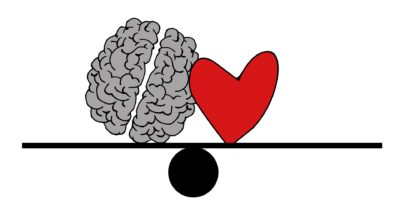I’ve been meditating lately. I’ve also been juggling sticks, and bouncing balls. I’ve been intentionally crossing my center line and stepping up my yoga practice. Why? Stress. Not because I have more stress than I had before, but, after a lifetime of suppressing my stress responses, I finally found out how to regulate them.
It turns out that we can learn to manage our own stress and emotions. As educators, we need this, both for ourselves and our students.
For the entirety of my career, I have heard it in the staff room and in our meetings: Our jobs are getting harder because the kids are harder to teach than they were before. Are they? Maybe. We certainly have specific challenges that are increasing year by year, and they often have everything to do with our students ability to manage their emotions, or self-regulate. For too long, educators stuck to the idea that the families were responsible for the emotional learning of young children, but we know better now. We are part of the team that teaches our kids to interact appropriately with one another, and, even more importantly we teach them self-regulation skills.
Honestly, we always have taught these skills. What has changed is that now we are more intentional about it, and we even have legislation to back it up. Standards have been written (OSPI’s SEL page), and all those publishers are making bank selling us all the new ways to help our kids with social emotional learning or SEL (the ASCD’s resource list).
I’m for it. Who wouldn’t be? The kids in our care can only benefit from building stronger relationships with their teachers and peers, and that is a big part of social emotional learning. But, since we have so many other things to teach them, SEL will often be wedged in as an add-on and it may or may not effectively help the ones who need it the most.
I believe we are making a big mistake starting at a systems level for something that is so personal and so individual in nature. Yes, our systems need to adapt to our present clientele. However, each of those individual students needs access to their own personal social emotional toolbox.

Here’s my proposal: Neural education is the key. Let’s give our kids an owner’s manual to their own brain. Research keeps piling up, telling us that there are very specific actions and activities that help us regulate our stress response and promote active learning behaviors. Let’s unveil these ideas. Let’s make sure all teachers have access to methods for teaching their students how to self-regulate. Let’s create a common language around brains, stress, emotions, learning, and regulation.
When a student cannot self-regulate, it means they feel stressed or unsafe in their environment. At such times, they cannot learn effectively. We can’t teach a child who is in this state. This is where we get the common complaint: They are harder to teach.
On the other hand, when you help your students move from their amygdala (where fight/flight/freeze occurs) to their pre-frontal cortex, you help them return to a state in which learning can take place.
I’ve begun using this language in my classroom. I now teach techniques for regulation right alongside literary terms and grammar. If I had known about neural education strategies two decades ago, I could have been a much more effective educator throughout my career. It’s a game changer. Discipline is a non-issue. Relationships strengthen. Kids feel like you see them, really see them. And it works for us, too. The same techniques I teach the kids work on me. I juggle, breathe deeply, bounce balls, meditate… Then it’s back to work with renewed vision and energy.
I’m a neural ed newbie with a reading wish list a mile long. I’m not an expert by any means. I can only urge other educators to take their first steps down this path, if they haven’t already.
Take a minute to meditate on this. Then, if you haven’t already, check out some of these resources to set yourself on the path to becoming a neural educator. It will make your job easier and literally regulate stress!
The Neural Education Institute
Neural Education Facebook Group
Video: Jump, Wiggle, Learn? Self-Regulation
Video: An Amygdala Hijack Explainer
Love the video links. Attending to the SEL needs of kids should continue to be a priority: Maslow’s, after all.
I agree fully. Even though I teach AP and Pre-AP courses, I”ve used Claudia Wallis’s “Teen Brain” article from Time Magazine as well as National Geographic writing on the teen brain in the introductory units of all my classes. There are so many positives students take from reading and discussing even a small article on teen neurology. Most importantly, they are great teaching tools for any teacher to inspire and motivate empathetically with their students, especially veteran teachers who move further away from their own teen brains each year.
The first chapter of Incognito by David Eagleman is another great resource.
I also have benefited immensely from being able to say, at the right times throughout the year, and with gentle humor, how impressive everyone’s neural pruning was of an earlier lesson or reading. Cue discussion of sleep habits, mindfulness, etc…and those tired teens are at least bonded in the best effort of striving for achievement instead of nebulous teen angst.
I would recommend the books Spark and Brain Rules as you begin your journey down the path! It is amazingly game changing as you say!
Love it!
Gretchen